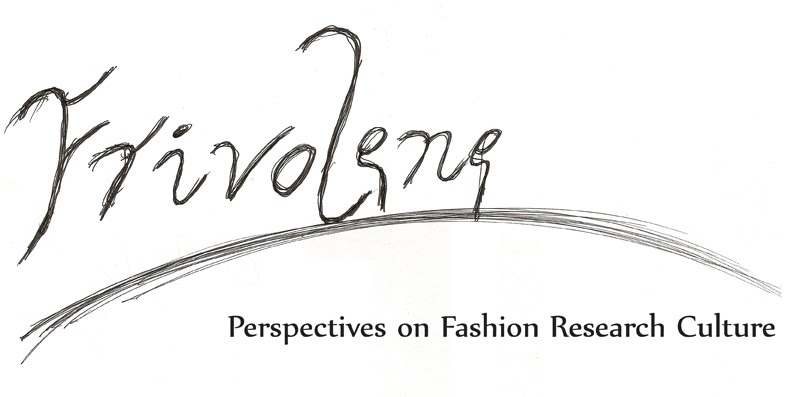
CPH Style - Drapers Magazine Cover Feature
Drapers Magazine, the UK fashion industry’s trade ‘bible’, has over recent years given an increasing amount of coverage to trade fairs and Fashion Weeks that are, on the surface, well away from the usual merry-go-round that is New York-London-Paris-Milan-Tokyo . Perhaps in light of its own confidence and influence on the North European fashion scene Copenhagen Fashion Week was given the accolade of being featured as Drapers cover-story. The cover itself featured an outfit from the By Marlene Birger catwalk show, a brand that is now a popular and reliable staple in many a British ‘indie’ boutique. The success of Danish fashion in the UK and elsewhere can perhaps be summed up by Drapers reporter Laura Weir’s assertion that:
Whether scoping the streets for inspiration or pounding the halls of mainstream behemoth Copenhagen International Fashion Fair (CIFF), the city’s fashion landscape has a preoccupation with sophisticated, quality product.

Advertisement from By Marlene Birger
While the style of clothing produced by Spanish, Italian, Portuguese or even French brands is sometimes considered a bit too ‘continental’, many UK retailers have found a trip to Copenhagen has a more suitable offering in terms of styling, especially in terms of a having a shared understanding of what it means to live in a ‘colder’ climate. Danish brands Drapers highlighted in its report included womenswear brands Edith & Ella (as well as sister brand Epoque), Best Behaviour, Bøgelund-Jensen and Lysgaard, ethical T-shirt brand A Question Of, and mens/womens brand Mads Nørgaard, all of which were cited as good examples of fashion brands with potential for UK retailers. For the more general reader, however, perhaps the most interesting aspect was a shopping report giving an overview of some of the most interesting boutiques in the city of Copenhagen itself. The newest of these included Wardrobe 19, open for just over a month, selling menswear by Han Kjobenhavn, amongst others. Pede & Stoffer, with two stores, one for men, one for women, was cited as being a good place to view the Danish take on low-key, yet high-end design. ParisTexas was included as a welcoming place to find pieces by well-known avant-garde designers like Rick Owens. Quirkier options included Sneaky Fox, whose owner regularly rotates the labels she stocks to keep things fresh, and Carmen Vintage, which was given as place to experience the Danish concept of ‘’hygge’’, or ‘’cosiness’’.

PARISTEXAS, Copenhagen
In recent years a number of other Danish designers and brands have to prominence, including Bruuns Bazaar, Ann-Sofie Back, Henrik Vibskov, Jens Laugesen, Noir, Sand, By Marlene Birger, Part Two, Martinique, InWear, Jackpot and Cottonfield, demonstrating how Danish fashion runs the gamut from ‘’avant-garde’’ through to ‘’ethical’’ and ‘’high-street’’ or ‘’mass’’ fashion. It appears CPH Vision and its sister show Terminal 2 are developing as the ‘’go-to’’ events for buyers looking for a quality-made, well-considered collections, while for journalists it offers a place to scope out what is happening in Scandinavia. At the same time, Copenhagen also appears to offer a more ‘’formal’’ clothing offer than it’s near neighbour Stockholm, which appears to be carving out its own niche in denim and street-wear brands such as Acne, Whyred, and WESC, not to mention the unstoppable growth of H&M. With Helsinki gearing up to become ''Design Capital of the World'' in 2012, and Norway also developing its international presence on the fashion scene with retailers such as Bik Bok expanding overseas, it will be interesting to monitor developments as Scandinavian fashion increases in confidence at all levels of the market. In particular, as the region has a particularly strong and rich history in the design of interiors, furniture and product design, Danish fashion designers are perhaps well-placed to capitalise on fashion’s ability to evolve and develop its reach into these areas too. It is not inconceivable to imagine a Noir range of ethical textiles for the home, Ann-Sofie Back ceramics, Sand furniture or InWear wallpaper.

Noir Fashion
Resources:
Trade Fair
CPH Vision/Terminal 2: http://www.cphvision.dk/
Brands:
Mads Nørgaard – www.madsnorgaard.com
Lysgaard – www.bylysgaard.dk
Edith & Ella/Epoque – www.edith-ella.com
A Question Of – www.aquestionof.dk
Best Behaviour – www.bestbehaviour.dk
Shops:
Sneakyfox – www.sneakyfox.dk
ParisTexas – www.paristexas.dk
Pede & Stoffer – www.pedestoffer.com































